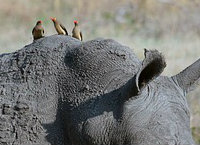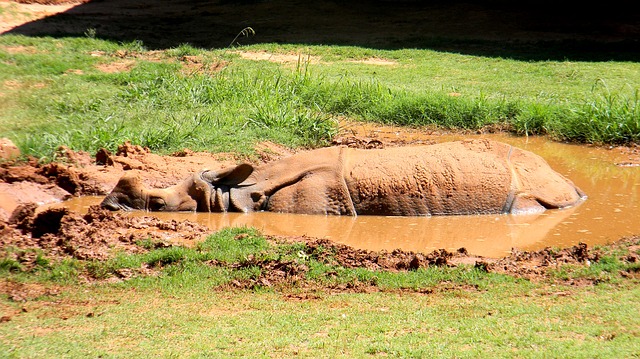Rhinoceros skin: thick but sensitive

The skin of a rhinoceros can be up to two inches thick. It is made up of many layers of collagen arranged in a crisscross pattern. While the skin is thick, it is also sensitive, which is part of the reason there is so much of it—more is needed to provide insulation and protection. The skin is especially sensitive on the surface.
The folds of a rino's skin are arrange differently on different species. For example, on the Indian rhinoceros, the folds are found mainly around the animal's joints, which makes movement easier.
Oxpeckers to the rescue
 In Africa, the oxpecker is one of the rhino's best friends. It sits on his back and feeds off of ticks, parasites, and other insects that crawl on the skin. The oxpecker will even disappear into a rhino's ears to pick at insects. Oxpeckers are also called tickbirds, and they thrive on other large mammals such as zebras and giraffes.
In Africa, the oxpecker is one of the rhino's best friends. It sits on his back and feeds off of ticks, parasites, and other insects that crawl on the skin. The oxpecker will even disappear into a rhino's ears to pick at insects. Oxpeckers are also called tickbirds, and they thrive on other large mammals such as zebras and giraffes.
In Swahili, the name of the oxpecker means "the rhino's guard." The bird warns the rhinoceros of danger by making warning sounds. The rhinceros has a fine sense of hearing, but it has poor eyesight.

